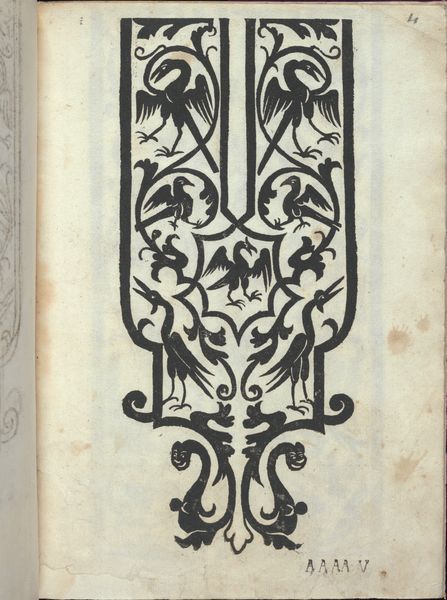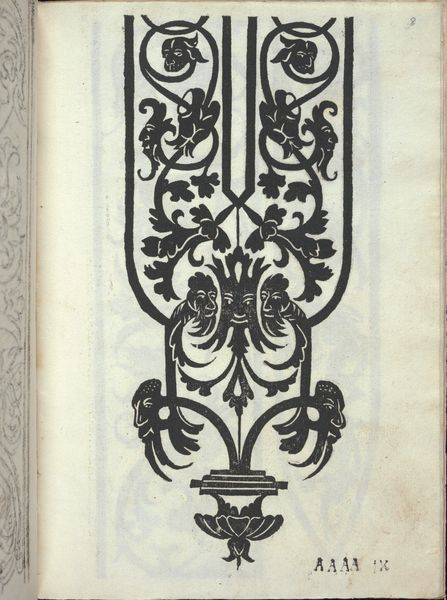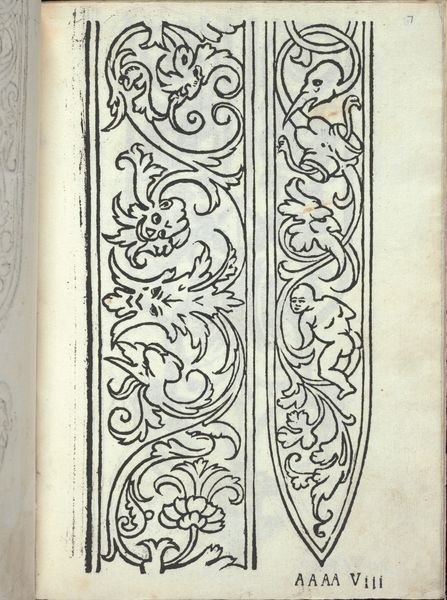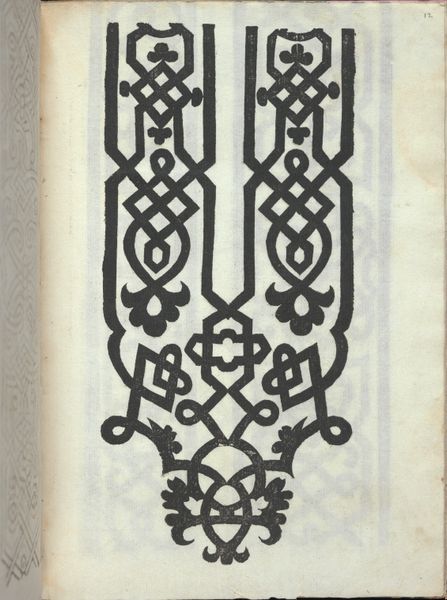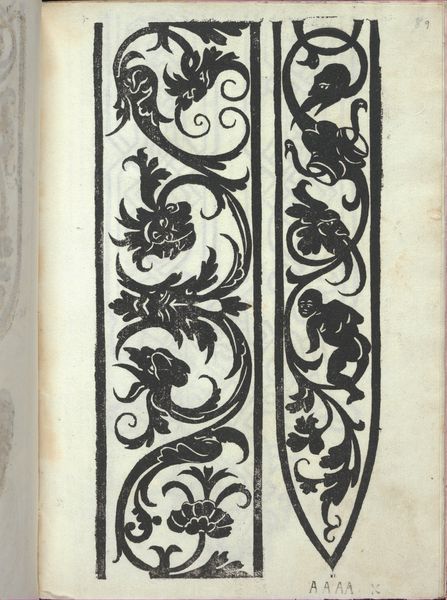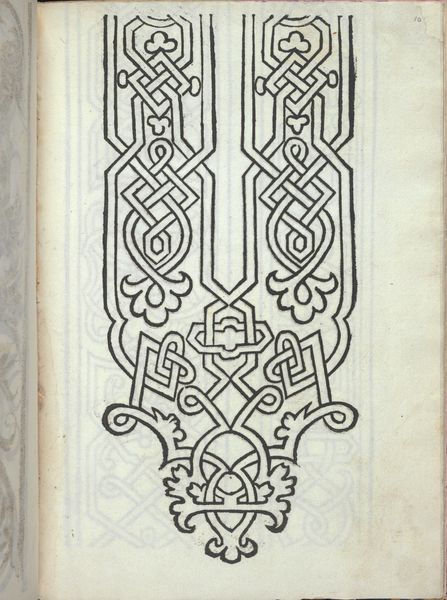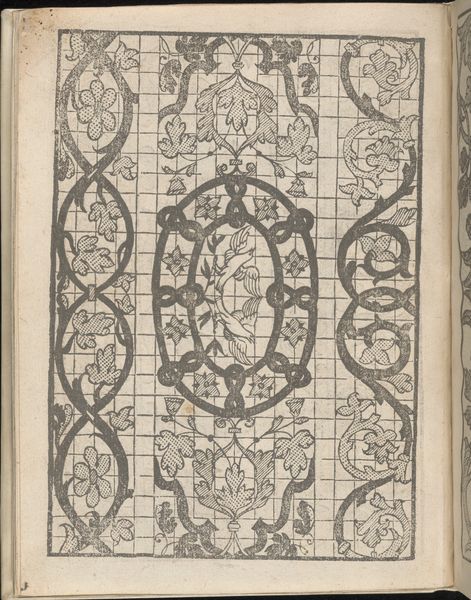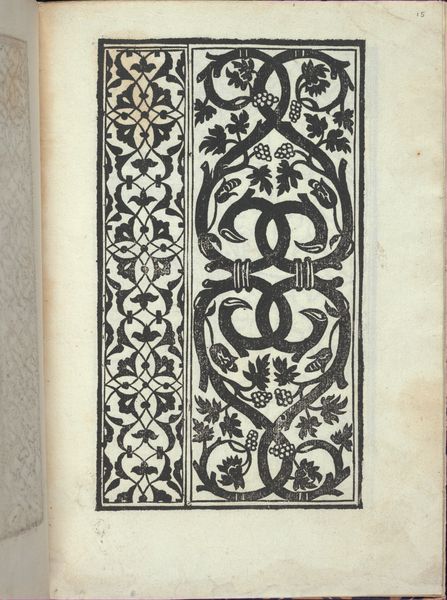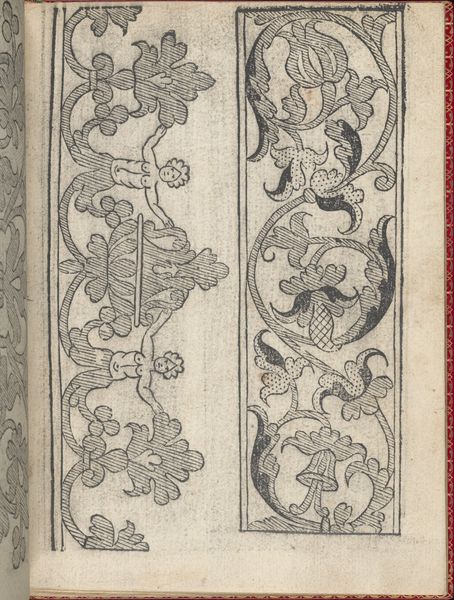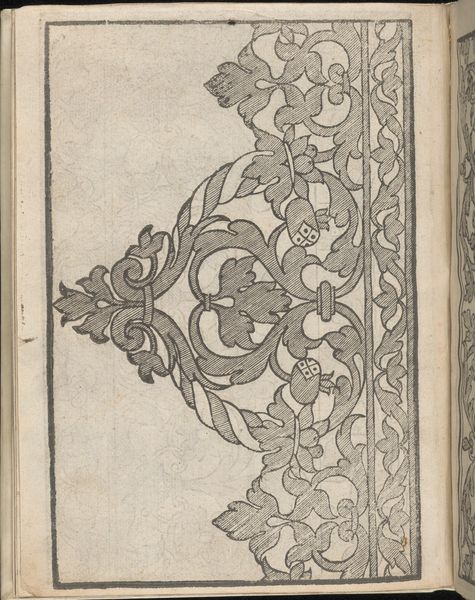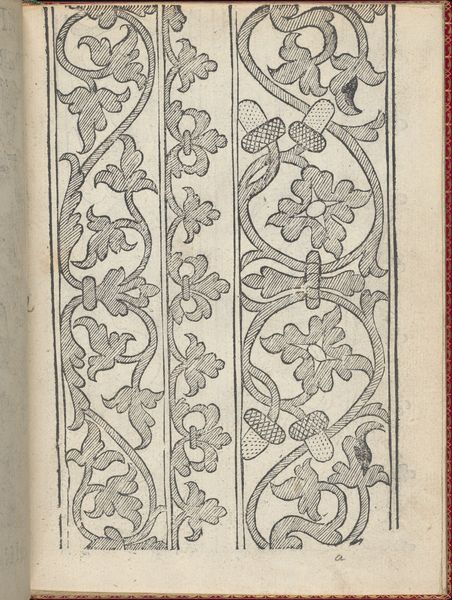
Libro quarto. De rechami per elquale se impara in diuersi modi lordine e il modo de recamare...Opera noua, page 6 (recto) 1532
0:00
0:00
drawing, graphic-art, ornament, print, paper, ink, woodcut
#
drawing
#
graphic-art
#
ornament
#
pen drawing
# print
#
book
#
paper
#
personal sketchbook
#
ink
#
geometric
#
woodcut
#
line
#
italian-renaissance
#
calligraphy
Dimensions: Overall: 8 3/8 x 5 7/8 x 3/16 in. (21.2 x 14.9 x 0.5 cm)
Copyright: Public Domain
Editor: Here we have a page from *Libro quarto. De rechami per elquale se impara in diuersi modi lordine e il modo de recamare...Opera noua*, created in 1532 by Alessandro Paganino. It’s a woodcut print, rendered in ink on paper. The intricate patterns are really striking! What socio-cultural purpose might such a work have served? Curator: Indeed, the repeating pattern draws you in, doesn't it? It's important to understand this image as more than just decoration. These were pattern books intended for embroidery, specifically aimed at women in the 16th century. How might access to this type of knowledge affect social dynamics for women in this period? Editor: It seems to provide an avenue for creativity and perhaps economic empowerment through skilled handiwork. Were there restrictions around who had access to these skills or this book? Curator: Precisely! Access was likely dictated by class and literacy, further reinforcing existing social hierarchies. However, it also offered women a sphere of influence, agency, and creativity within the domestic realm. By mastering these patterns, women could contribute economically and express their identity. Does the rigid symmetry play a role in this at all, in your opinion? Editor: It could be that the strict geometric lines could offer women from marginalized communities an outlet to embrace Renaissance fashion in their clothing through accessible pattern-making. Curator: Right. It is very empowering to know one can design and customize embroidery and adornment patterns that one can proudly call their own. So the book acts as a means for expression and self-representation. This really changes the way we perceive ornamentation! Editor: Absolutely, it really highlights the connections between art, social structures, and individual agency in very tangible ways. Thank you for expanding my thinking today.
Comments
No comments
Be the first to comment and join the conversation on the ultimate creative platform.
